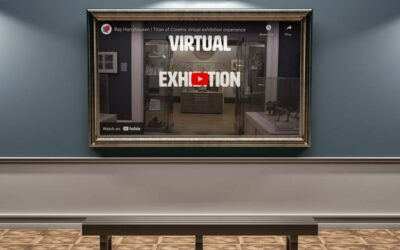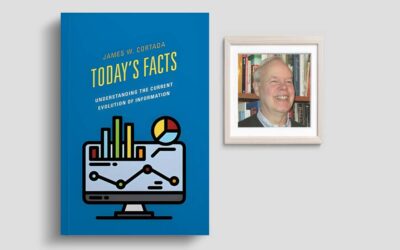KM Secret: Improve Findability Part Two

Stan Garfield
There are many ways to build a positive reputation for knowledge management within your organization. Making content easier to find is a big win. Last week I focused on user interface elements and channels, and introduced the idea of curated content and answers. Please read on for more about the content itself and how it can be organized for better findability.
How to choose what to provide.
- Request submissions from content providers, but be selective in what you accept; some providers will submit and endless list of best bets, and not all of these will be worthwhile.
- Match the existing intranet high-level navigation so that for each link in the top navigation and/or breadcrumbs, there is a corresponding quick answer.
- Ask key contacts for each category what they consider important; contacts can be organizational leaders, thought leaders, subject matter specialists, community leaders, or knowledge managers.
- Ask ESN groups and communities for suggestions, and also share the proposed quick answers there to get confirmation or changes.
- Review enterprise search logs for the most searched-for terms and the most clicked-on search results.
- Review web analytics for the most visited pages and downloaded documents.
- Review websites and documents that are liked or tagged as useful by users.
- Ask all help desks to provide the most frequent queries and replies.
- Review queries posted in the ESN, email messages sent to distribution lists, and requests sent to official mailboxes; look for patterns of missing or hard-to-find content.
- Review all published FAQs.
12 things to provide in enterprise search.
- Type-ahead search, autocomplete, incremental search, incremental find, find/filter as you type, or real-time suggestions—to save typing and match new searches to previous ones
- Best bets – pinned at the top of the results with thumbnails and links, highlighted to differentiate them from other results
- Authoritative recommendations—marked with special badges that can only be assigned to authoritative sources
- Quick answers—self-contained content that offers enough information to possibly avoid the need to click through to other sites
- Options to feed the search to the most relevant ESN group or to a help desk to get answers from real people
- Synonyms—closest matches from a curated thesaurus
- Closest matches from the intranet’s A-Z index
- Closest matches from the organizational hierarchy
- Closest matches from internal and external taxonomies
- Closest matches from user tags
- Related—since you downloaded X, try Y; since you visited A, try B
- Sorted by attributes:
- Most visited or downloaded
- Most liked
- Most reused—add an “I reused this document” or “I found this useful” button, similar to a “Like” button but more specific, to all content; encourage users to click on this button for content they were able to reuse
- Most tagged—allow content to be tagged with “recommended” or “good example” or “proven practice”
- Most recent
10 suggested categories for the curated list of quick answers, with examples.
- Internal organizational structure—Finance, Human Resources
- Formal taxonomy: industry or internal—Global Industry Classification Standard, enterprise taxonomy
- Products and Services—Android, Strategy & Operations Consulting
- Topics—security, supply chain management
- Industries—electronics, pharmaceuticals
- Clients—GE, US Government
- Partners—Ford, Microsoft
- Locations—Latin America, Detroit
- Specialties and Roles—project management, information architect
- Demographics—new hires, retirees
Read Part 1 below

Stan Garfield
Lucidea Press has published my latest book, Proven Practices for Promoting a Knowledge Management Program, which offers advice and insights drawn from my career as a KM practitioner, including more tips on embracing technology to offer a great user experience.
Similar Posts
Lucidea’s Lens: Knowledge Management Thought Leaders Part 98 – Rachad Najjar
Generative AI, expertise mapping, and knowledge sharing—Rachad Najjar has spent his career at the intersection of these disciplines. As the CEO of 3R Knowledge Services and former knowledge-sharing leader at GE Vernova, he has helped many organizations design smarter KM strategies. In this edition of Lucidea’s Lens, Stan Garfield highlights Rachad’s contributions to the field.
Examining the National Galleries of Scotland’s Harryhausen Digital Exhibit
In October 2020, the National Galleries Scotland (NGS), Ray Harryhausen | Titan of Cinema (October 2020 – February 2022) exhibition was meant to open and celebrate what would have been Harryhausen’s centenary year. Due to COVID the physical exhibit was forced to close...
Interview with the Author: Jim Cortada on Today’s Facts and the Evolution of Information
Dr. James Cortada, historian and senior research fellow at the Charles Babbage Institute, explores the history of information in his forthcoming book. By examining how information has been created, organized, and used over time, Cortada reveals patterns that continue to shape modern librarianship and knowledge management.
Understanding Archival Acquisition: Purpose, Methods, Challenges, Best Practices
Archival acquisition is the heart of preserving history, ensuring records of lasting value are saved for future generations. In this post, Margot Note breaks down the essentials of archival acquisition with tips and insights to help build meaningful archival collections.




Leave a Comment
Comments are reviewed and must adhere to our comments policy.
0 Comments